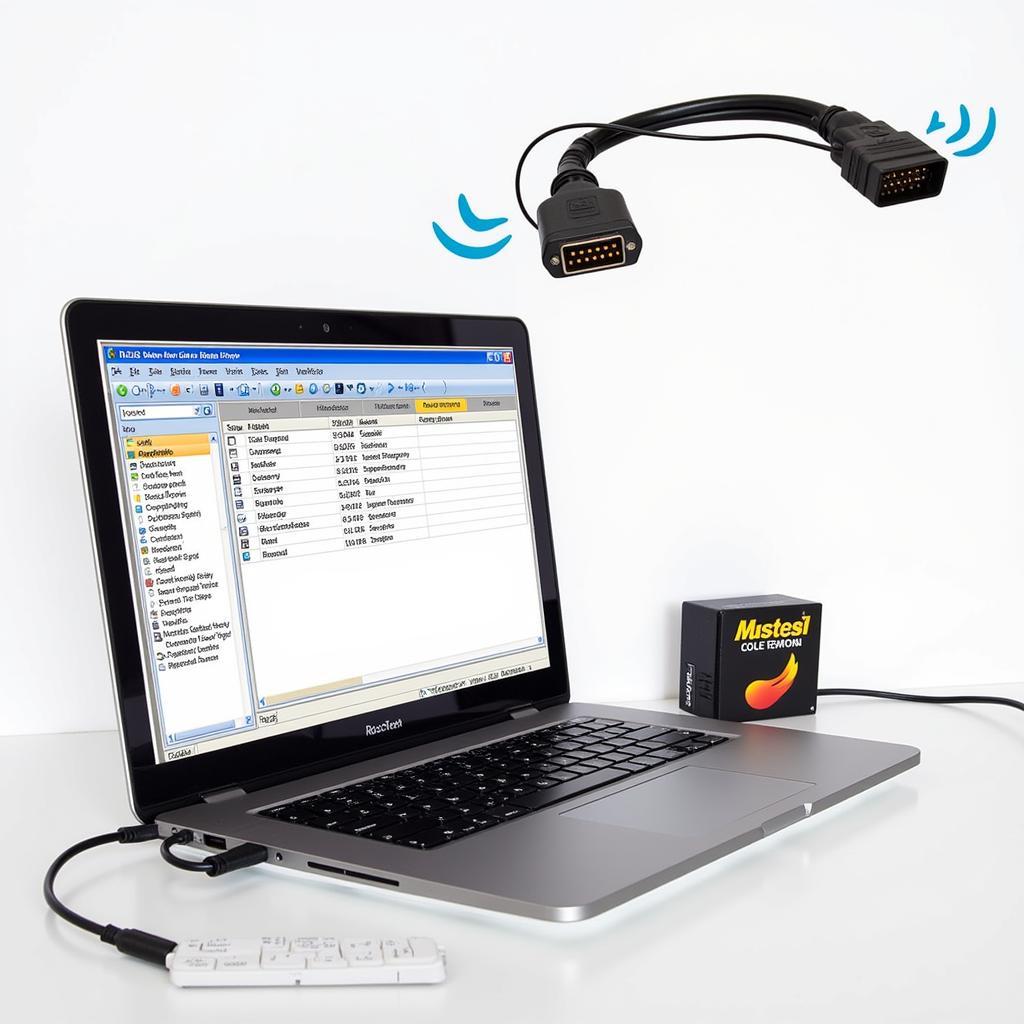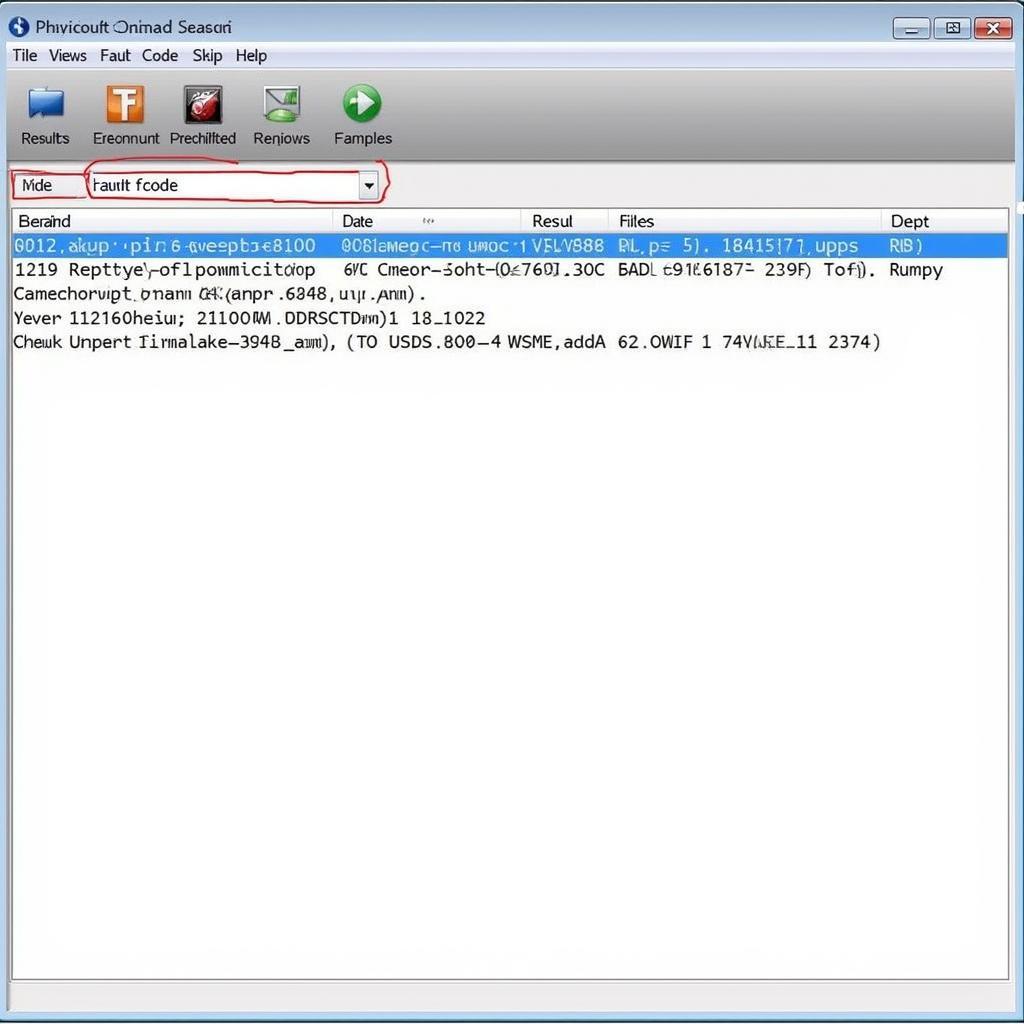RossTech VCDS is a powerful diagnostic tool essential for any serious automotive enthusiast, repair shop, or professional technician. This comprehensive guide delves into the capabilities of VCDS, exploring its functionalities, benefits, and common uses in diagnosing and resolving vehicle issues. We’ll cover everything from basic code reading to advanced programming, offering valuable insights for both beginners and seasoned professionals.
Understanding RossTech VCDS and Its Importance
VCDS (VAG-COM Diagnostic System) by RossTech is a software and hardware combination specifically designed for Volkswagen, Audi, Seat, and Skoda vehicles (collectively known as the VAG group). Unlike generic OBD-II scanners, VCDS offers deep access to the various control modules within these vehicles, allowing for comprehensive diagnostics, adjustments, and even coding changes. This level of access provides a significant advantage when troubleshooting complex issues that generic scanners often miss. Its user-friendly interface makes it accessible even for car owners who want to delve deeper into understanding their vehicles.
Key Features and Benefits of Using RossTech VCDS
VCDS stands out due to its extensive feature set and the benefits it offers over generic OBD-II tools. Here’s a breakdown:
- Comprehensive Module Access: Access and communicate with all control modules within the vehicle, allowing for in-depth diagnostics and adjustments.
- Detailed Fault Code Reading: Provides specific fault code definitions, explanations of potential causes, and suggested repair procedures.
- Live Data Monitoring: View real-time data from various sensors and systems, aiding in pinpointing issues and monitoring performance.
- Coding and Adaptations: Modify control module settings to customize features, activate hidden functionalities, or adapt components after replacement.
- Output Tests: Activate individual components such as actuators, relays, and lights for targeted testing and troubleshooting.
- Basic Settings: Perform guided procedures for calibrating and adapting various systems after repairs or component replacements.
Common Applications of RossTech VCDS
From simple diagnostics to complex coding, the applications of VCDS are vast:
- Diagnosing Engine Troubles: Identify and resolve engine-related issues such as misfires, sensor malfunctions, and emissions problems.
- Troubleshooting Transmission Issues: Diagnose and address transmission problems, including shifting issues, slippage, and control module errors.
- Resolving Airbag System Faults: Diagnose and clear airbag system fault codes, ensuring proper system functionality and safety.
- Addressing ABS and ESP Issues: Identify and resolve problems with the anti-lock braking system (ABS) and electronic stability program (ESP).
- Customizing Vehicle Features: Activate convenience features, adjust lighting settings, and personalize various vehicle parameters.
- Performing Component Adaptations: Adapt new or replacement components to the vehicle’s systems, ensuring seamless integration and proper operation.
 RossTech VCDS Interface Cable and Software
RossTech VCDS Interface Cable and Software
How to Use RossTech VCDS for Diagnostics
Using VCDS for diagnostics is relatively straightforward, even for beginners:
- Connect the Interface: Connect the VCDS interface cable to the vehicle’s OBD-II port and your computer.
- Launch the Software: Open the VCDS software on your computer.
- Select Control Module: Choose the specific control module you wish to diagnose.
- Scan for Fault Codes: Initiate a scan to identify any stored fault codes.
- Interpret Fault Codes: Review the retrieved fault codes, including their descriptions and potential causes.
- Clear Fault Codes: After addressing the underlying issues, clear the fault codes from the control module.
Advanced Functionality and Coding with RossTech VCDS
For more experienced users, VCDS unlocks advanced functionalities like coding and adaptations:
- Coding: Modify control module settings to adjust various vehicle parameters and activate hidden features.
- Adaptations: Perform specific procedures to adapt new or replacement components to the vehicle’s systems.
- Long Coding: Access and modify the long coding string within control modules for more granular customization.
Choosing the Right RossTech VCDS Interface
RossTech offers various interface versions. Selecting the correct one depends on your needs and budget:
- HEX-V2: The latest generation interface with full functionality and support for newer vehicles.
- HEX-NET: A wireless interface offering flexibility and convenience for professional use.
Conclusion: Unleashing the Power of RossTech VCDS
RossTech VCDS is an indispensable tool for anyone seeking in-depth diagnostics, coding, and customization options for VAG vehicles. Whether you’re a DIY enthusiast, a workshop owner, or a professional technician, investing in RossTech VCDS empowers you to understand and maintain your vehicles at a higher level.
FAQ
- Is RossTech VCDS compatible with all VAG vehicles? Generally, yes, but compatibility varies based on model year and specific modules.
- Can I damage my car using VCDS? While unlikely, improper use of coding and adaptation functions can potentially cause issues.
- What’s the difference between VCDS and generic OBD-II scanners? VCDS offers significantly more in-depth access and functionality compared to generic scanners.
- Do I need a license for VCDS? Yes, a license is required for full functionality.
- Where can I purchase a genuine RossTech VCDS interface? Directly from RossTech or authorized distributors.
- Are there online resources for learning how to use VCDS? Yes, RossTech provides extensive documentation and support forums.
- Can I use VCDS on multiple vehicles? Yes, a single license can be used on multiple VAG vehicles.
For further assistance, please contact us via Whatsapp: +1 (641) 206-8880, Email: [email protected] or visit our workshop at 276 Reock St, City of Orange, NJ 07050, United States. Our customer support team is available 24/7. We also offer a range of other diagnostic and repair services. Check out our other articles on automotive diagnostics and repair on our website.


